Understanding the New US Treasury Report on Homeowners Insurance
Homeowners insurance is a cornerstone of financial security for millions of Americans. It protects what is often their largest asset against unforeseen events. However, recent trends in the insurance market have raised concerns about both the affordability and availability of this crucial coverage. Against this backdrop, the U.S. Department of the Treasury, through its Federal Insurance Office (FIO), has released a landmark report shedding light on the current state of the homeowners insurance market in the United States. This US Treasury report homeowners insurance costs represents the most extensive collection of data on this market to date, offering a detailed, granular view of premium trends, availability challenges, and the underlying factors contributing to these shifts.
The report is the culmination of a significant collaborative effort between the FIO, the National Association of Insurance Commissioners (NAIC), and state insurance regulators. This partnership facilitated the collection and analysis of data from over 330 insurers, encompassing more than 246 million homeowners insurance policies over the period from 2018 to 2022. Aggregated to the ZIP Code level, this data provides an unprecedented look at regional variations and localized impacts across the nation. The timing of the report’s release, coinciding with ongoing climate-related events in various parts of the country, underscores the urgency and relevance of its findings. The primary objective of this comprehensive analysis is to arm policymakers, insurers, and the public with a deeper understanding of the challenges facing the homeowners insurance market, particularly those driven by the increasing frequency and severity of climate-related perils.
By providing this in-depth dataset and analysis, the US Treasury report on homeowners insurance costs aims to inform potential strategies and actions needed to address the rising costs and declining availability that many homeowners are experiencing. It highlights the complex interplay between environmental factors, insurance market dynamics, and the economic well-being of American families and communities. Understanding the scope and methodology of this report is the first step in grasping the significance of its conclusions and their potential implications for the future of homeowners insurance in the United States.
Rising Costs and Declining Availability: Key Findings from the US Treasury Report Homeowners Insurance Costs
One of the most striking findings of the US Treasury report homeowners insurance costs is the clear trend of rapidly increasing premiums across the nation. While the rate of increase varies by region and even down to the ZIP Code level, the overall picture shows that the cost of protecting one’s home is growing at a pace that outstrips general inflation. According to the data analyzed from 2018 to 2022, average homeowners insurance premiums per policy rose 8.7 percent faster than the rate of inflation during the same period. This means that for many homeowners, the cost of insurance is consuming a larger portion of their household budget each year, independent of the general rise in prices for other goods and services.
However, the report makes it clear that this increase is not uniform. Certain communities and regions are bearing a disproportionately larger burden. Specifically, homeowners residing in ZIP Codes identified as having the highest expected annual losses due to climate-related perils are facing significantly higher premiums compared to those in lower-risk areas. The report illustrates this disparity with compelling data: homeowners in the 20 percent of ZIP Codes with the highest expected climate-related losses paid an average premium of $2,321 between 2018 and 2022. This figure is a staggering 82 percent higher than the average premium paid by homeowners in the 20 percent of ZIP Codes with the lowest climate risk.
Beyond just the rising cost, the US Treasury report on homeowners insurance costs also points to a concerning trend of declining availability in certain areas. The report uses policy nonrenewal rates as a key indicator of availability challenges. In areas with the highest expected losses from climate-related perils, policy nonrenewal rates were notably higher. On average, nonrenewal rates in the highest risk ZIP Codes were about 80 percent greater than those in the lowest risk ZIP Codes. Furthermore, the report indicates that these average nonrenewal rates increased more significantly in the highest risk areas during the 2018-2022 period compared to lower-risk areas. This upward trend in nonrenewal rates, particularly concentrated in vulnerable regions, strongly suggests that it is becoming harder for homeowners in these areas to maintain continuous insurance coverage.
The combination of rapidly increasing costs and growing challenges in obtaining coverage creates a difficult landscape for many homeowners. These trends not only impact individual household finances but also have broader implications for the housing market and local economies, which rely heavily on stable property values supported by adequate insurance coverage. The detailed data within the US Treasury report on homeowners insurance costs provides a crucial foundation for understanding where these pressures are most acute and for developing targeted responses.
Climate Change: A Major Driver Behind Soaring Premiums
The US Treasury report on homeowners insurance costs unequivocally links the observed trends of rising premiums and decreasing availability to the increasing impact of climate-related events. The report highlights that climate change is not just affecting homeowners through increased risks of damage, but is also significantly impacting the cost of doing business for insurance companies. Insurers’ operational costs were markedly higher in areas that experienced greater expected losses from climate-related perils during the 2018-2022 period.
A key metric used in the report to illustrate this point is the paid loss ratio. This ratio represents the amount insurers pay out in claims relative to the premiums they collect. The US Treasury report homeowners insurance costs data shows that the paid loss ratio was highest in the ZIP Codes identified as having the highest expected climate risk. This is directly attributable to both a higher frequency of insurance claims and an increased severity of those claims in these vulnerable areas. For instance, the average severity of claims in the highest risk areas was approximately $24,000, compared to an average of about $19,000 in the lowest risk areas. More frequent and more costly claims mean higher payouts for insurers, which ultimately translates into higher premiums for policyholders as insurers adjust their pricing to reflect the increased risk and cost of potential claims.
The connection to climate change is further underscored by broader national data on natural disasters. The National Oceanic and Atmospheric Administration (NOAA) reported 84 separate billion-dollar disasters (excluding floods, which are typically covered by separate policies like those offered by the National Flood Insurance Program or private flood insurance) between 2018 and 2022. The cumulative costs of these events exceeded $609 billion, and this trend of costly disasters has continued to rise. While the US Treasury report on homeowners insurance costs focuses on nine specific types of climate-related perils, it does not delve into flood risk, acknowledging that this is typically a separate insurance product. However, many areas vulnerable to climate change impacts are also prone to flooding, indicating a compounding risk factor for homeowners in certain regions.
The escalating frequency and intensity of events like wildfires, hurricanes, severe storms, and extreme temperatures directly contribute to the financial strain on the insurance industry. As these events become more common and destructive, the risk calculations for insurers change, leading to higher costs, reduced willingness to insure properties in high-risk zones, and consequently, rising premiums and availability challenges for homeowners. The data presented in the US Treasury report homeowners insurance costs provides compelling evidence that climate change is a fundamental driver of the current turbulence in the homeowners insurance market.
For homeowners in areas susceptible to these perils, understanding these trends is crucial. It highlights the importance of not only maintaining adequate coverage but also exploring measures to mitigate risk. Resources on topics such as beachinsurancellc.com/insurance/how-to-prepare-for-a-hurricane-a-comprehensive-guide-beach-insurance-llc/ target=_blank>how to prepare for a hurricane or how to complete a flood risk assessment, while the report excludes flood, can still be highly relevant for homeowners in climate-vulnerable areas.
Regional Hotspots: Where Homeowners Face the Highest Increases
While the US Treasury report homeowners insurance costs indicates a nationwide trend of rising premiums and declining availability, it emphasizes that these challenges are not evenly distributed. The report identifies significant variation by region and even at the granular ZIP Code level, highlighting specific hotspots where homeowners are experiencing the most severe impacts.
These regional variations are directly tied to the susceptibility of different areas to specific climate-related perils. For instance, coastal regions are more vulnerable to hurricanes and tropical storms, while areas in the West face higher risks of wildfires. The Great Plains may experience more severe thunderstorms, hail, and tornadoes. The US Treasury report homeowners insurance costs analyzed data across nine types of climate-related perils (excluding flood and non-climate disasters like earthquakes) to assess the expected annual losses for buildings in different ZIP Codes.
The areas identified as high-risk in the report are those with the greatest concentration of properties exposed to and likely to be impacted by these specific climate events. As discussed earlier, homeowners in the 20 percent of ZIP Codes with the highest expected climate-related losses faced premiums that were 82 percent higher than those in the lowest risk ZIP Codes. This significant premium gap underscores how geographic location and its associated climate risks are becoming increasingly dominant factors in determining the cost of homeowners insurance.
Furthermore, the report’s finding that policy nonrenewal rates are significantly higher in these high-risk ZIP Codes indicates that availability issues are also concentrated geographically. Insurers, facing higher costs and greater uncertainty in these areas, may be more hesitant to offer new policies or renew existing ones, leading to a tightening market for homeowners in these vulnerable regions. This can force homeowners to seek coverage from fewer providers, potentially at much higher costs or with less comprehensive coverage options.
The granular data collected for the US Treasury report homeowners insurance costs allows for a detailed understanding of which communities and states are most affected. While the report itself aggregates data for public release to protect privacy, the underlying ZIP Code level data provides a powerful tool for policymakers and regulators to identify areas in need of specific attention and support. For homeowners living in or considering moving to areas prone to specific climate risks, understanding the potential impact on insurance costs and availability is a critical part of assessing the overall cost and practicality of homeownership. Factors like hurricane deductibles, common in coastal areas, also play a significant role in the total cost of risk for homeowners in these regions.
What This Means for You: Impact on Homeowners and Property Values
The findings of the US Treasury report homeowners insurance costs have tangible and significant implications for individual homeowners and the broader housing market. For many Americans, their home is not only their primary residence but also their most valuable financial asset. Adequate homeowners insurance is essential to protect this investment against potential damage or loss. However, as the cost of this insurance rises and its availability becomes more limited in certain areas, homeowners face a growing financial burden and increased uncertainty.
Directly, rising premiums impact household budgets. Just as other essential costs like utilities and groceries fluctuate, the cost of homeowners insurance is now adding another layer of unpredictability, particularly in high-risk areas. The report’s finding that premiums outpaced inflation means that this cost is growing faster than the general cost of living for many. This can make homeownership less affordable, especially for those with fixed incomes or tight budgets.
Beyond the direct cost, the availability of insurance also has profound implications. If a homeowner in a high-risk area finds it difficult or impossible to obtain comprehensive coverage, they are exposed to significant financial risk in the event of a climate-related disaster. Without adequate insurance, the cost of repairs or rebuilding could be ruinous. This lack of protection can undermine the financial security of families and potentially lead to forced sales or foreclosures if damage occurs.
The challenges in the homeowners insurance market can also impact property values. In areas where insurance is prohibitively expensive or hard to get, the desirability of owning a home may decrease. Potential buyers may be deterred by the ongoing cost and risk, potentially reducing demand and putting downward pressure on property values. This has ripple effects beyond individual homeowners, impacting local government tax bases that rely on property values for revenue. A decline in property values can shrink the tax base, potentially affecting funding for public services.
Furthermore, the report implicitly highlights the importance of risk mitigation for homeowners. Taking steps to fortify homes against specific perils, such as wind damage in hurricane-prone areas or fire-resistant landscaping in wildfire zones, can potentially reduce risk and, in some cases, influence insurance eligibility and premiums. Understanding coverages like loss of use coverage explained is also crucial, as it provides financial assistance if a home becomes uninhabitable after a covered loss.
In essence, the US Treasury report homeowners insurance costs serves as a wake-up call regarding the growing financial vulnerabilities associated with homeownership in an era of increasing climate impacts. It underscores the need for homeowners to be proactive in understanding their risks, assessing their insurance needs, and exploring strategies to navigate this evolving market.
Challenges for Insurers in a Changing Climate
The US Treasury report homeowners insurance costs provides valuable insights not only into the experiences of homeowners but also into the challenges faced by the insurance industry itself. As climate-related events become more frequent and severe, insurers are grappling with increased costs and greater uncertainty, which directly influence their business models and pricing strategies.
The core challenge for insurers lies in accurately assessing and pricing risk in a changing environment. Traditional actuarial models, which rely heavily on historical data, may not adequately predict future losses in areas increasingly exposed to unpredictable and extreme weather patterns. The report’s finding of higher paid loss ratios in high-risk areas demonstrates that insurers are already paying out more in claims relative to the premiums they collect in these regions. This imbalance is unsustainable in the long run and necessitates adjustments.
Insurers operate by pooling risk across a large base of policyholders. However, when a concentrated area experiences a major disaster, the pooled risk can be overwhelmed by massive payouts in a short period. The increasing number and cost of billion-dollar disasters, as highlighted by the NOAA data referenced in the report, put significant financial pressure on insurers, potentially affecting their solvency and capacity to underwrite new policies, particularly in vulnerable regions.
The increased nonrenewal rates observed in high-risk ZIP Codes reflect insurers’ responses to these heightened challenges. Nonrenewal can be a strategic decision by an insurer to reduce their exposure in areas where the risk has become unmanageable or difficult to price profitably. This can lead to a shrinking market with fewer options for consumers, further contributing to availability issues.
In addition to direct claim costs, insurers also face increased operational expenses related to assessing damage, processing claims, and managing the logistics of recovery after a major event. These factors, combined with the fundamental uncertainty of future climate impacts, create a complex operating environment.
The US Treasury report homeowners insurance costs, while focusing on the impact on homeowners, implicitly highlights the need for innovation and adaptation within the insurance industry. This includes developing more sophisticated risk modeling techniques that incorporate forward-looking climate data, exploring new types of coverage or risk-sharing mechanisms, and potentially working more closely with communities on resilience-building efforts. The report’s data provides a solid foundation for insurers to better understand where these challenges are most pronounced and to inform their strategies for navigating the evolving risk landscape.
Navigating the Market: Tips for Homeowners Facing Higher Costs
Given the trends highlighted by the US Treasury report homeowners insurance costs, many homeowners are understandably concerned about the rising cost and potential availability challenges of their insurance. While the broader issues require systemic solutions, there are steps individual homeowners can take to navigate this evolving market and potentially mitigate the impact on their finances and coverage.
1. Understand Your Policy and Coverage Needs: Don’t wait for a disaster to understand what your policy covers and, perhaps more importantly, what it doesn’t. Review your dwelling coverage to ensure it reflects the current cost of rebuilding your home, not just its market value. Pay close attention to deductibles, especially for specific perils like windstorms or hurricanes, which can be significantly higher in vulnerable areas. Understand your liability coverage and explore options for additional protection like umbrella insurance if needed. Articles on topics such as understanding the coinsurance requirement in your homeowners insurance policy can help clarify complex policy details.
2. Assess Your Risk Profile: Be realistic about the climate risks specific to your location. Research the history of climate events in your area and understand your property’s vulnerability. While the US Treasury report homeowners insurance costs excludes flood data, it’s essential to remember that flood risk is a major concern in many climate-vulnerable areas. Consider how to know if you need a good flood insurance policy, as standard homeowners insurance does not cover flood damage. Understanding your specific risks empowers you to make informed decisions about coverage and mitigation.
3. Implement Risk Mitigation Strategies: Taking proactive steps to reduce your property’s vulnerability to climate perils can potentially impact your insurance. This might include reinforcing your roof to withstand high winds, installing storm shutters, elevating utilities to protect against flood damage (where applicable), or creating defensible space around your home to reduce wildfire risk. Some insurers offer discounts or incentives for certain mitigation efforts. Consulting resources on vital homeowner maintenance tips to prevent costly damage can also contribute to reducing overall risk.
4. Shop Around and Compare Options: Don’t assume that your current insurer offers the best rates or coverage. The market is constantly changing, and premiums can vary significantly between providers for the same level of coverage. Obtain quotes from multiple insurance companies, including both large national carriers and smaller regional ones. An independent insurance agent can be invaluable in this process, as they can compare policies and prices from various insurers on your behalf.
5. Consider Your Deductible: Choosing a higher deductible will lower your premium. However, ensure you can comfortably afford to pay that deductible out-of-pocket if you need to file a claim. This is a balancing act between reducing your monthly cost and managing your financial exposure during a loss event.
6. Inquire About Discounts: Ask your insurance agent or potential insurers about available discounts. Common discounts include those for home security systems, fire alarms, bundling multiple policies (like home and auto insurance), maintaining a good claims history, and having a newer home. Even small discounts can add up over time.
7. Maintain Good Communication with Your Insurer or Agent: Keep your insurance provider updated on any significant changes to your home or circumstances. Regularly review your policy with your agent to ensure it still meets your needs and that you understand any changes in coverage or cost. Proactive communication can help you stay ahead of potential issues, such as policy nonrenewal.
Navigating the homeowners insurance market in light of the trends highlighted by the US Treasury report homeowners insurance costs requires diligence and proactivity. By understanding the factors driving changes, assessing personal risks, taking mitigation steps, and actively shopping for coverage, homeowners can better position themselves to secure the essential protection their home needs in a challenging environment.
Have questions? Contact us here.






